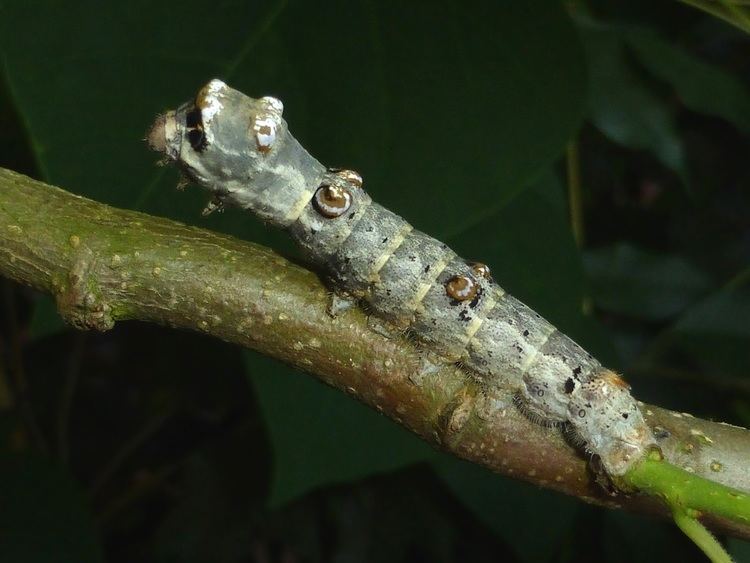Scientific name Bombyx mandarina | Genus Bombyx Rank Species | |
 | ||
Similar Bombycidae, Bombyx, Antheraea, Bombycoidea, Antheraea pernyi | ||
Bombyx mandarina mariposa
Bombyx mandarina, the wild silkmoth, is an insect from the moth family Bombycidae. It is the closest relative of Bombyx mori the domesticated silkmoth or "silkworm" (properly, this refers to the caterpillars only). Unlike the domesticated relative which is unable to fly or indeed persist outside human care, the wild silkmoth is a fairly ordinary lepidopteran. Its main difference from the domesticated taxon is the more slender body with well-developed wings in males, and the dull greyish-brown color.
Contents
- Bombyx mandarina mariposa
- Vuelo del h brido bombyx mori con bombyx mandarina
- Phylogeny and systematics
- References

Vuelo del h brido bombyx mori con bombyx mandarina
Phylogeny and systematics

Together, the two species constitute the genus Bombyx, the true or mulberry silkmoths. The origin of the domesticated silkmoth is enigmatic. It has been suggested that it is the survivor of an extinct species which diverged from the ancestors of Bombyx mandarina millions of years ago. However, this is based on an untenable molecular clock hypothesis that assumes that wild and domestic silkmoths evolved equally fast after their lineages diverged. Rather, the effects of artificial selection have accelerated evolution in the domestic form to a point where it is hard to trace the origin of the numerous breeds of domestic silkworms even with the most modern molecular phylogeny methods. Conceivably, today's domesticated silkworms are all descended from an initial stock of B. mandarina collected as late as 5000 years ago. While wild silk could have been collected and used as threads, etc., since much earlier, the technology to breed and use silkworms from a domesticated stock did not exist before the late Neolithic.

However, it has been possible to trace the geographical origin of the domestic silkmoth. The wild species occurs over a considerable range from inland China to Korea and Japan, and shows much (albeit subtle) variation. The populations from the northeastern end of the range, for example, differ in karyotype from those of inland China. Domestic silkmoths are closer to the latter regarding mtDNA sequence data, and especially lack some genetic apomorphies of the northeastern B. mandarina. Thus, the initial domestic stock came from inland China.

B. mandarina is able to hybridize with B. mori. Both in the wild and in a domesticated environment, females release pheromones and wait for males to be attracted and fly to them. However, B. mori males cannot fly. Hybridisation in the wild, therefore, inevitably means breeding between domestic (B. mori) females and wild (B. mandarina) males. Hybridization is possible in both directions in a domesticated environment.
Consequently, the two silkmoths have been united as subspecies of a single species; in this case the name Bombyx mori which was published first applies for both. However, today it is usually recognized that the domesticated silkmoth is entirely dependent on human care for its survival and thus has a level of reproductive isolation from its wild relatives.
